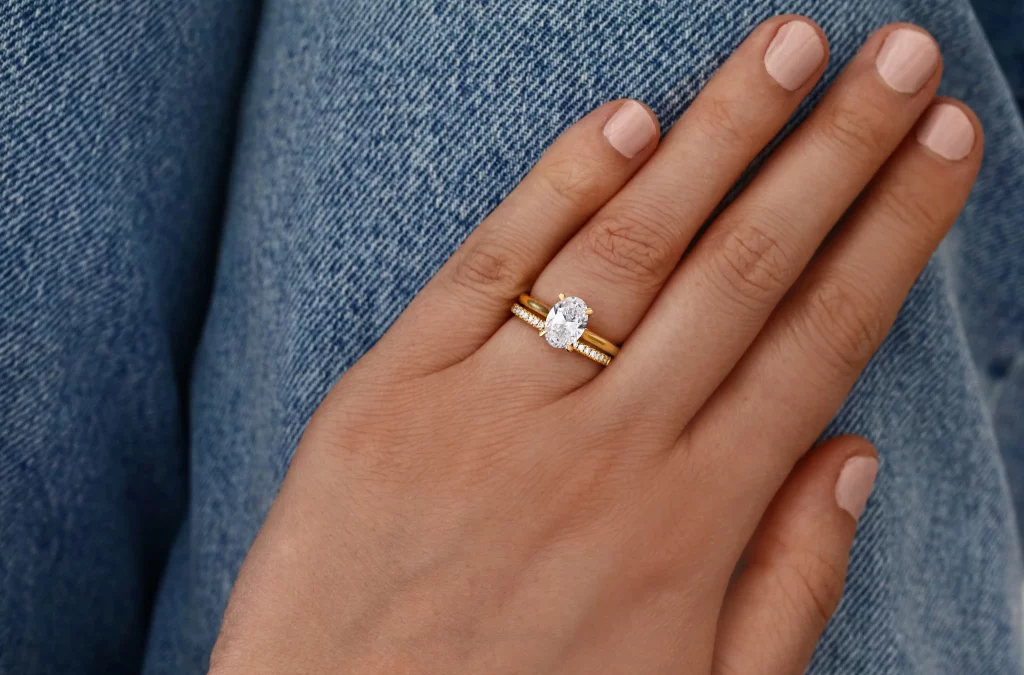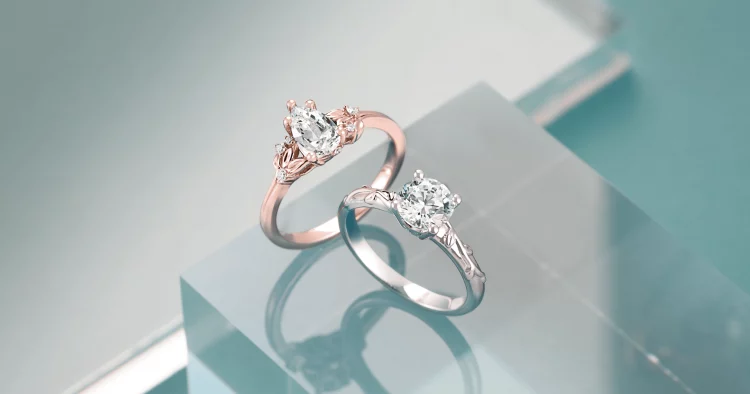Introduction: The Rise of Lab-Grown Gold
Over the last decade, technological advancements have revolutionized various industries, and the jewelry sector is no exception. Lab-grown diamonds and precious stones have already made their mark, offering an ethical and sustainable alternative to mined stones. Now, the emergence of lab-grown gold alloys is sparking a debate: is this the future of the gold jewelry market, or is it just a passing trend?
Lab-grown gold is a product of technological innovation that allows gold to be created in a controlled laboratory environment, mimicking the natural processes of gold formation. With growing concerns about the environmental and social impact of traditional gold mining, lab-grown gold offers a potential solution for environmentally conscious consumers. But as with any new technology, it raises questions about its investment potential, value, and whether it could disrupt the traditional gold jewelry market.
This article will explore the emergence of lab-grown gold alloys, their potential impact on the jewelry market, and how they could influence traditional jewelry valuations and investment strategies.
The Science Behind Lab-Grown Gold
Lab-grown gold is produced using a process that simulates the natural geological conditions in which gold is formed. Through advanced techniques, such as electrolysis, chemical vapor deposition (CVD), or other proprietary methods, gold is extracted from ores in a controlled, laboratory setting. This process allows for the creation of pure gold or gold alloys with a variety of desired properties.
One key advantage of lab-grown gold is that it can be produced with a high degree of purity, often exceeding the purity levels of mined gold. This can lead to gold products that are cleaner and more consistent in quality. Additionally, lab-grown gold can be produced with less environmental impact compared to traditional mining methods, which require large-scale extraction processes that can harm ecosystems and involve significant energy consumption.
The production of lab-grown gold also presents a new opportunity for controlling the materials’ origin and ensuring that they are conflict-free. Given the ethical concerns surrounding traditional gold mining, lab-grown gold offers a transparent alternative that guarantees a more sustainable and socially responsible source.
The Investment Potential of Lab-Grown Gold Jewelry
Traditionally, gold has been viewed as a safe haven asset, an investment that protects against economic uncertainty and inflation. The value of gold is determined by its scarcity, historical significance, and use in various industries, including jewelry, technology, and finance. However, as lab-grown gold becomes more widely available, many are questioning how it could affect gold’s long-established role as an investment vehicle.
One of the major challenges for lab-grown gold is its perceived value compared to natural gold. While lab-grown gold offers many environmental and ethical benefits, its synthetic nature raises questions about its long-term value as an investment. Gold’s appeal lies partly in its rarity, and the fact that lab-grown gold can be produced in large quantities could diminish its investment potential, at least in the eyes of traditional investors.
That said, the investment potential of lab-grown gold may still exist, but in a different context. Lab-grown gold could appeal to younger, sustainability-conscious investors who view gold more as an ethical investment rather than a traditional store of wealth. While it may not hold the same historical value as mined gold, its innovation and lower environmental cost could make it a desirable asset for those seeking more sustainable options.
For investors focused on the environmental impact of their portfolios, lab-grown gold could become an attractive alternative. As demand for sustainable and ethical investments grows, lab-grown gold might find its place in diversified portfolios, especially if its market grows and the technology continues to improve.
How Innovation Could Affect Traditional Jewelry Valuations
The introduction of lab-grown gold into the market could have significant implications for the valuation of traditional gold jewelry. Historically, the value of gold jewelry has been tied to the purity, weight, and rarity of the metal, as well as the craftsmanship of the design. Mined gold’s scarcity has traditionally been a key factor in its value, and this scarcity contributes to its status as a luxury material.
However, as lab-grown gold becomes more widespread, its impact on traditional gold jewelry valuations could be twofold. On one hand, the increased availability of gold through lab-grown methods could push down the cost of gold jewelry, making it more accessible to a wider range of consumers. This could lower the prices of some jewelry pieces and alter the dynamics of the gold jewelry market.
On the other hand, the introduction of lab-grown gold could lead to a stronger demand for high-end, limited-edition, and uniquely crafted pieces made from mined gold. As lab-grown gold floods the market with more affordable options, traditional jewelry made from natural gold might increase in value due to its rarity and the craftsmanship involved in its production. This could create a bifurcation in the gold jewelry market, where mass-produced, lab-grown gold jewelry sits at a lower price point, while high-end pieces made from mined gold become more valuable.
Additionally, the increasing focus on sustainability could influence the pricing and desirability of both lab-grown and mined gold jewelry. Consumers and investors who value ethical sourcing and environmental impact may prefer lab-grown gold jewelry, while traditional buyers may still seek the prestige associated with owning rare, mined gold pieces.

Consumer Perception and the Future of Lab-Grown Gold Jewelry
One of the biggest hurdles for lab-grown gold is consumer perception. While lab-grown diamonds have gained acceptance in the market, gold has a much longer history of being viewed as a symbol of wealth, status, and luxury. Changing the perception of gold as a precious commodity requires shifting cultural attitudes, which can take time.
In the jewelry market, perception plays a critical role in the value of gold. Jewelry made from mined gold is often seen as more prestigious due to its natural origins and the historical legacy of gold as a store of wealth. Lab-grown gold, while potentially of equal quality, may not yet carry the same cachet. However, as younger consumers place more value on sustainability, the status of lab-grown gold may rise. The growing demand for eco-friendly products could result in lab-grown gold becoming more desirable to those seeking ethical alternatives, particularly among millennials and Gen Z.
As the market for lab-grown gold evolves, it will be essential for jewelers and manufacturers to educate consumers about the benefits of lab-grown gold, particularly its environmental advantages and ethical sourcing. By positioning lab-grown gold as a sustainable and ethical alternative to mined gold, it may gain a foothold in the luxury market, where sustainability is becoming an increasingly important factor in purchasing decisions.
The Role of Technology in Shaping Gold Jewelry’s Future
Technology is a key driver of innovation in the jewelry industry, and lab-grown gold is just one example of how new technologies are reshaping the market. As techniques for producing lab-grown gold continue to improve, the quality, purity, and affordability of the material could increase, making it more competitive with mined gold.
Furthermore, advancements in digital technologies such as blockchain could be used to track the provenance of both lab-grown and mined gold, providing transparency and ensuring that the gold is ethically sourced. This could add an additional layer of trust and value to both types of gold, making them more appealing to consumers who are increasingly concerned about the social and environmental impact of their purchases.
In the future, lab-grown gold could be used alongside other innovative technologies, such as 3D printing, to create intricate, customizable jewelry designs. The combination of sustainable gold with cutting-edge design technology could push the boundaries of what is possible in jewelry, attracting a new generation of consumers who value both style and sustainability.
Conclusion: A Disruptor or Passing Trend?
Lab-grown gold presents an exciting opportunity for the jewelry industry, offering a more sustainable and ethical alternative to mined gold. However, its potential to disrupt the market remains uncertain. While lab-grown gold may not yet match mined gold in terms of investment value and consumer perception, it is poised to become a significant player in the market, particularly as younger generations prioritize sustainability.
The key to lab-grown gold’s success will lie in its ability to change consumer perceptions, demonstrate its long-term value, and compete with traditional gold jewelry in terms of both quality and design. As technology continues to evolve and the demand for ethical, sustainable products increases, lab-grown gold may very well carve out its niche in the jewelry market. Whether it becomes a true disruptor or remains a niche trend will depend on how well it can align with the evolving needs of consumers and investors alike.
































